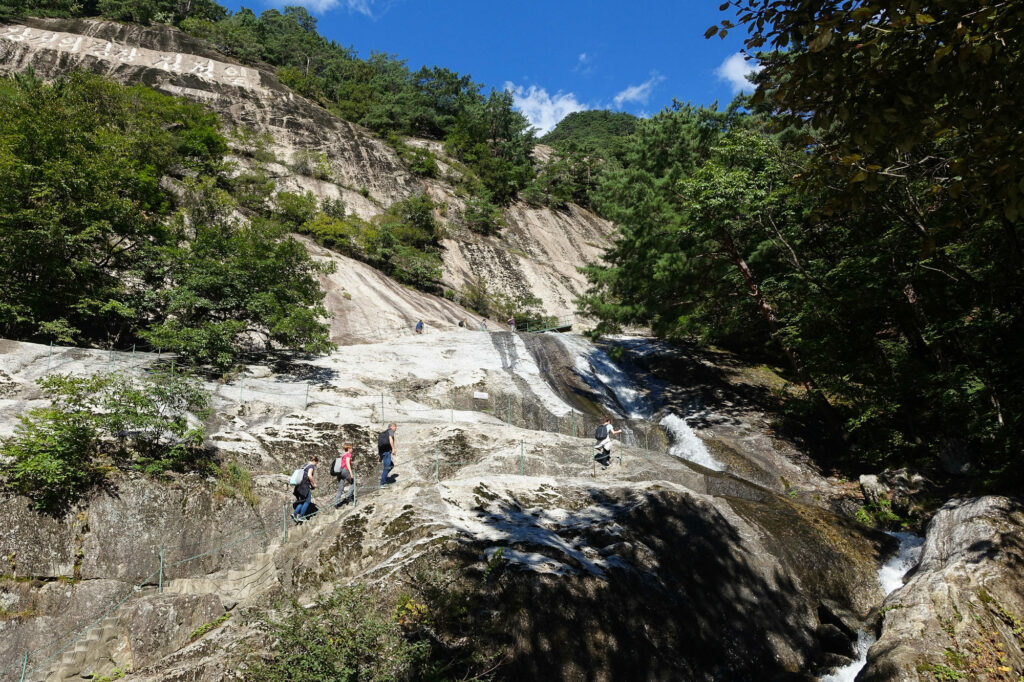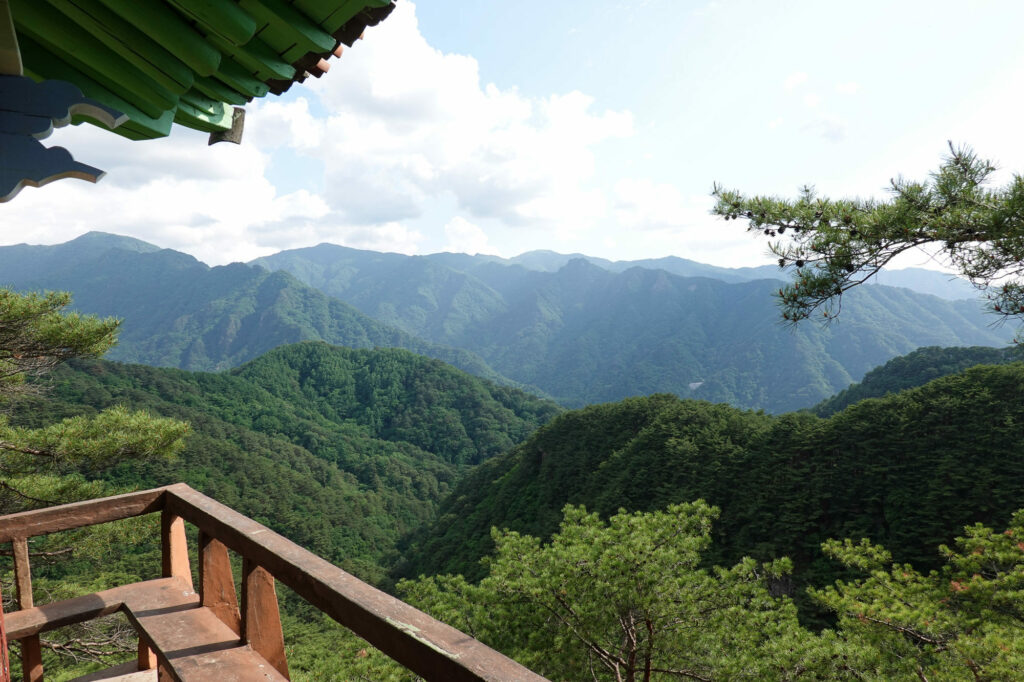Mt. Myohyang offers some of the most beautiful hiking in North Korea. Hikes vary in length and difficulty, and are flexible to be undertaken as either return routes or interlinked across the Myohyangsan range for longer, and even overnight, hikes. There’s no obligation to reach the peaks, and the scenery on these hikes is breathtaking throughout. Hiking Mount Myohyang is accessible to hikers of all fitness levels.
Manphok Valley

Manphok Valley means ‘ten thousand waterfalls’ and is the most popular hiking route on Mt. Myohyang. The name does not disappoint, as the Manphok Valley trail follows a succession of waterfalls cascading the mountain into crystal-clear pools. The hike begins with an ascent up Sogok Falls so one does not need to hike far to be rewarded with North Korea’s untouched nature. The trail is lined with rugged rock formations topped by pavilions which make great rest stops to take in breathtaking views over the pine forest. The Manphok Valley track is well maintained and while steep in certain sections, there are steel handrails and treading installed. The hike to Kuchung Waterfall (9-Tiered Falls) is a 6.2km round trip.
Sangwon Valley

The Sangwon Valley hike is the least strenuous on Mount Myohyang, yet highly rewarding for those that complete the 6.6km round trip to Sangwon Hermitage. The hike begins beneath shaded canopy where you’ll cross suspension bridges over gentle streams laden with waterfalls. You’ll pass a myriad of historic relics including pavilions, temples and a unique monks’ graveyard containing 44 stone stupas. The final stretch to Sangwon Hermitage is the most demanding, but dramatic views quickly emerge from the forest, and you’ll be greeted at the top by perhaps the luckiest monk in North Korea thanks to the unrivaled outlook and serenity surrounding the hermitage. The route can be continued to Popwang Peak which is a further 3km of steep hiking.
Chonthae Valley and Chilsong Valley (Piro Peak)
Piro Peak is the highest point of Mount Myohyang. This trail is reserved for serious hikers with appropriate equipment. At 18km return, the hike should be approached as a two-day hike with an overnight spent wild camping. Both the ascent in Chonthae Valley and the descent in Chilsong Valley are on a steep unmaintained track, and a local guide is necessary. The full route to Piro Peak is rarely undertaken, but the 5.8km return trip to Isonnam Falls is an accessible choice. The 16th century Habiro Hermitage is a highlight en route to Isonnam Falls, nestled above the confluence of streams from each valley.
